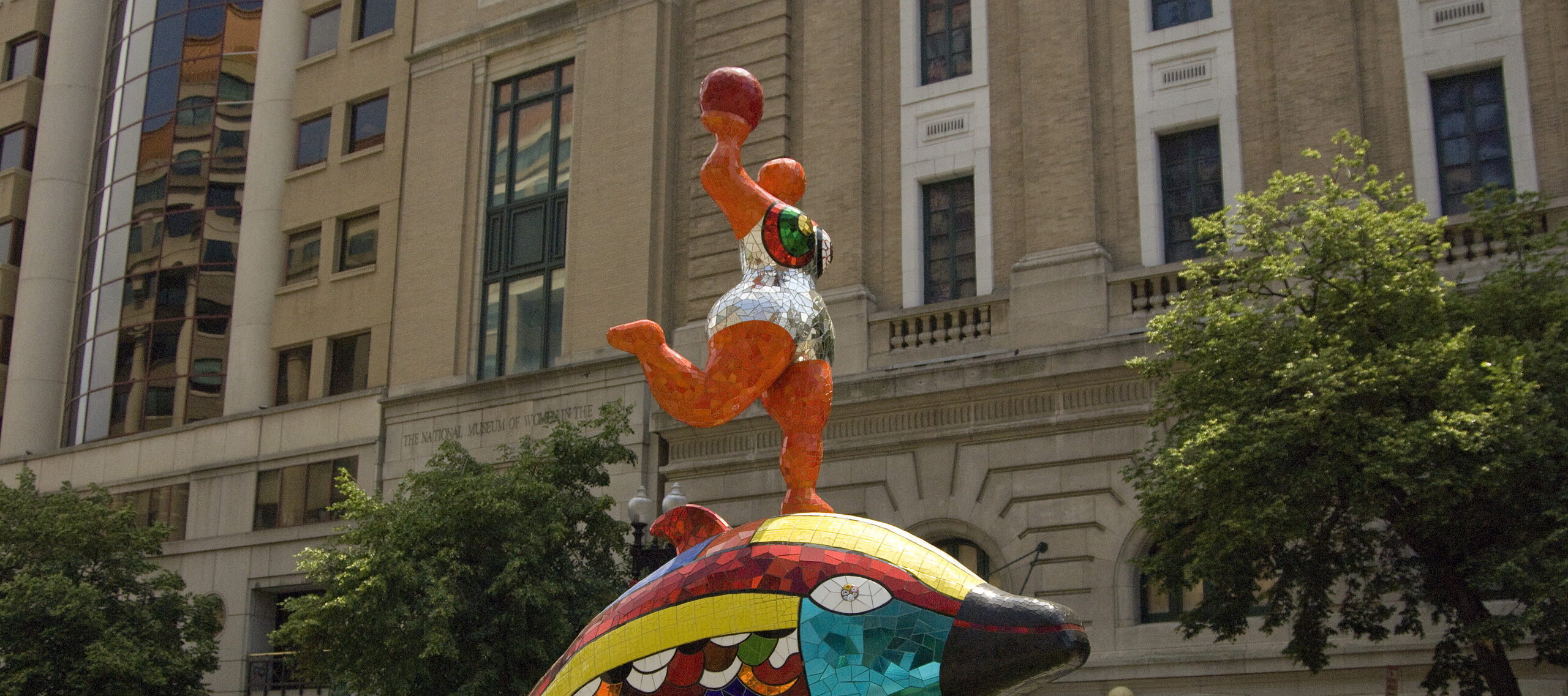In this series of blog posts, NMWA Curator of Book Arts Krystyna Wasserman recounts a recent trip to Europe: The focus of a journey could be the exploration of a new territory or a spiritual journey in search of internal peace. It could also be the need to assuage one’s desire for friendship, love, or adventure or, simply, finding an inspiration for creative work. My trip to Germany and Italy in September 2011 was focused on viewing works created by women, on meeting artists, particularly book artists, and on cultivating old friendships.
PART II . Berlin and Hannover
Karla Woisnitza, a painter and book artist, has several works in NMWA’s collection. She grew up in East Germany and lived there until the unification in 1989. Karla has had many solo exhibitions in Germany; most recently she has shown her paintings and drawings in Mannheim Kunsthalle. She invited me to her studio and home to review the new artist’s book that she has been working on for the last five years, which NMWA is acquiring. Each page is filled with the exquisite abstract ink drawings, rendered in a repetitive and highly decorative pattern of signs. Her work is peopled by distorted figures somewhat inspired by the ubiquitous graffitti in Berlin. Near Woisnitza’s studio, on the corner of Lychener and Raumerstrasse, is Frida Kahlo Restaurant, a building painted vibrant blue, just like the Blue House and Frida Kahlo Museum in Mexico City.
There are many splendid museums in Berlin, but some of them ignore completely women artists. A magnificent exhibition of Italian Renaissance portraiture, at the Bode Museum, Gesihter der Renaissance: Meisterwerke Italienischer Portrait-Kunst, did not include one work by a woman. The Gemäldegalerie has a very few works by women on view, among them a painting by Sofonisba Anguissola of her mother Bianca Ponzone Anguissola, a beautiful self-portrait by Anna-Dorothea Therbusch, Angelica Kauffmann’s Bachante, and Elisabeth Louise Vigée-Lebrun’s angelic portrait of Prince Heinrich Lubomirski. In the Neue Nationalgalerie, among the works of art created between the years 1900–1945, there is a large painting by Lotte Laserstein, Evening over Potsdam, as well as numerous works by Hannah Höch, Natalia Goncharova, Paula Modersohn-Becker, and Marianne Werefkin. Visiting museums in Europe, for centuries bastions of male art, one observes the growing visibility of women artists in the 20th and 21st centuries. The “old mistresses” are mostly forgotten, an affirmation that NMWA’s mission is significant.
My second stop in Germany was Hannover. I went there to see my old friend Prof. Dr. Ruth von Ledebur, a retired professor of English literature whose special interest has been Shakespeare. My friendship with her dates to the 1970s and 1980s, when we used to go with our husbands to international conferences. While they were busy with their meetings we found time to drive around Europe and visit museums. Thanks to her, I discovered works by Judith Leyster in Haarlem. We took a streetcar to downtown Hannover and explored two superb museums, the Sprengel Museumand the Landes Museum.
Sprengel is best known for its collection of works and the Archive of Kurt Schwitters, including his famous architectural sculpture-room installation known as Merzbau, which was created between 1920 and 1937, destroyed during World War II, and reconstructed by Peter Bissegger in 1983. Schwitters was almost singlehandedly responsible for the development of the Hannover Dada, one of the centers of the Dada movement in central Europeafter World War I. His artist-friend Hannah Höch (who was part of Berlin Dada group) is also well represented by numerous assemblages, collages and drawings.
Niki de Saint Phalle (whose work has been showcased in NMWA’s New York Avenue Sculpture Project) is exceptionally popular in Hannover. Her La Grotte, Nana figures and other large public sculptures are on permanent display in the Great Garden of the Herrenhausen, and the Sprengel museum includes several galleries of her prints, drawings and sculptures. The Landes Museum (Hannover State Museum) celebrates Paula Modersohn-Becker. Three galleries are devoted to her paintings, including Girl in a Black Hat.
